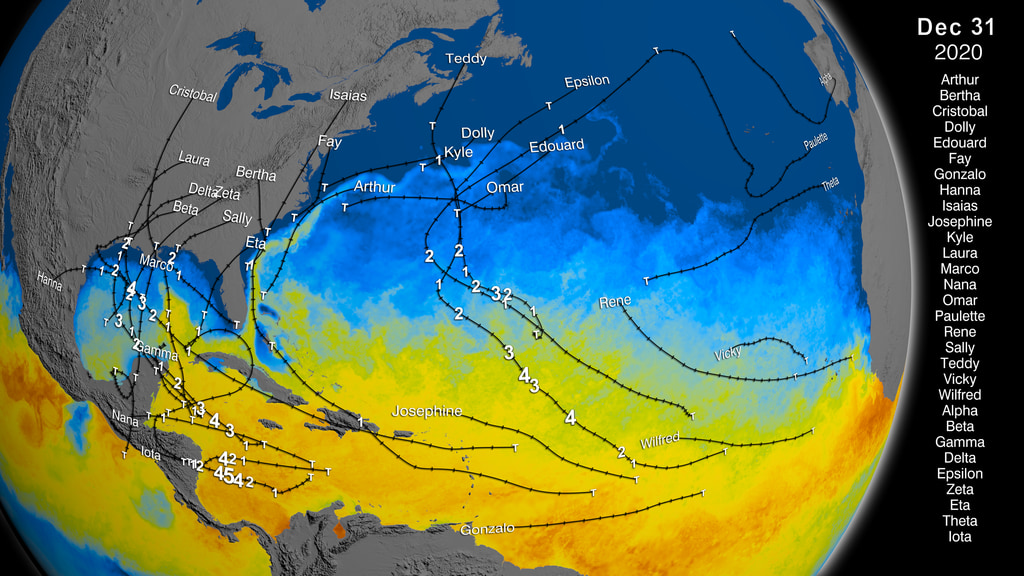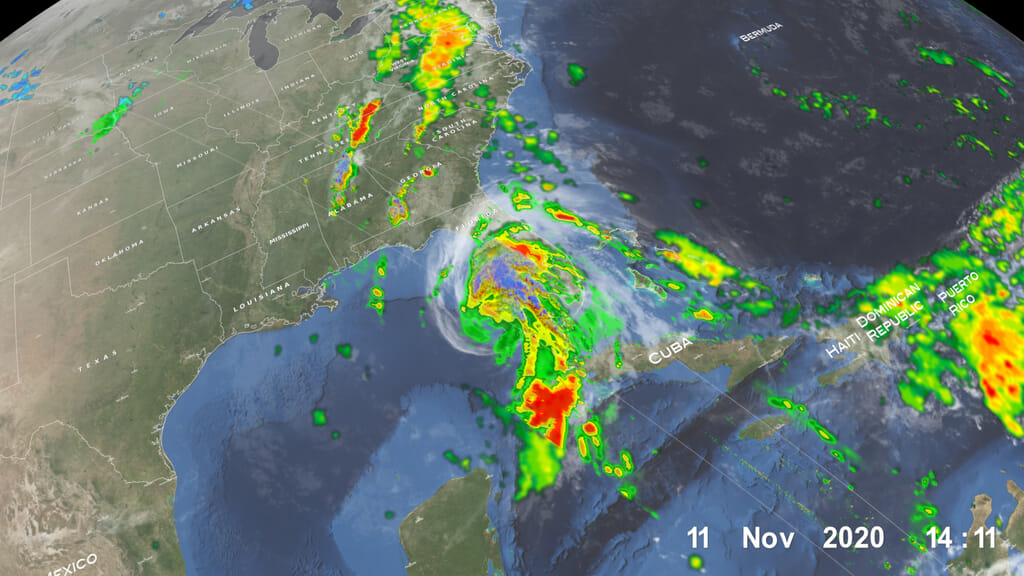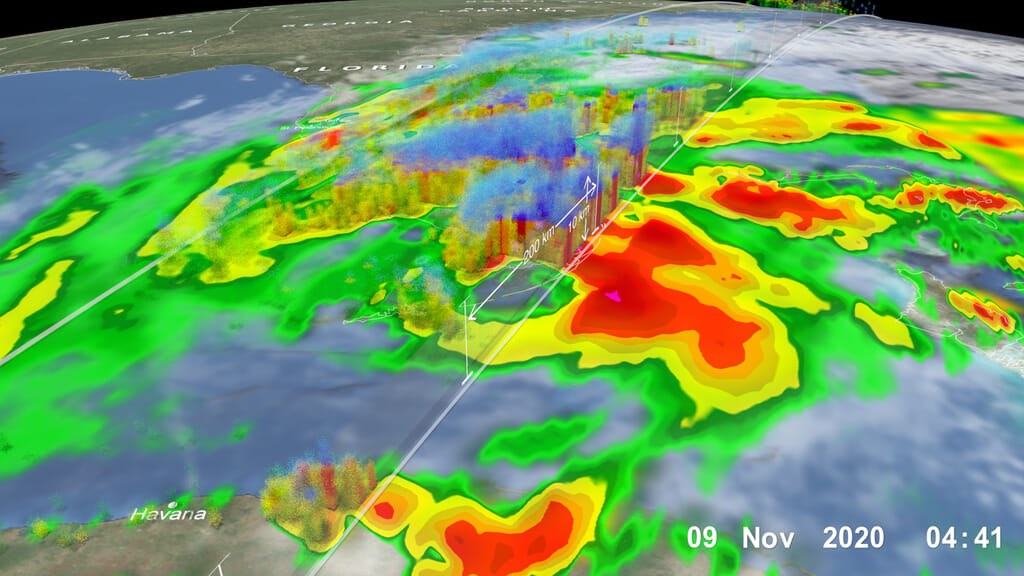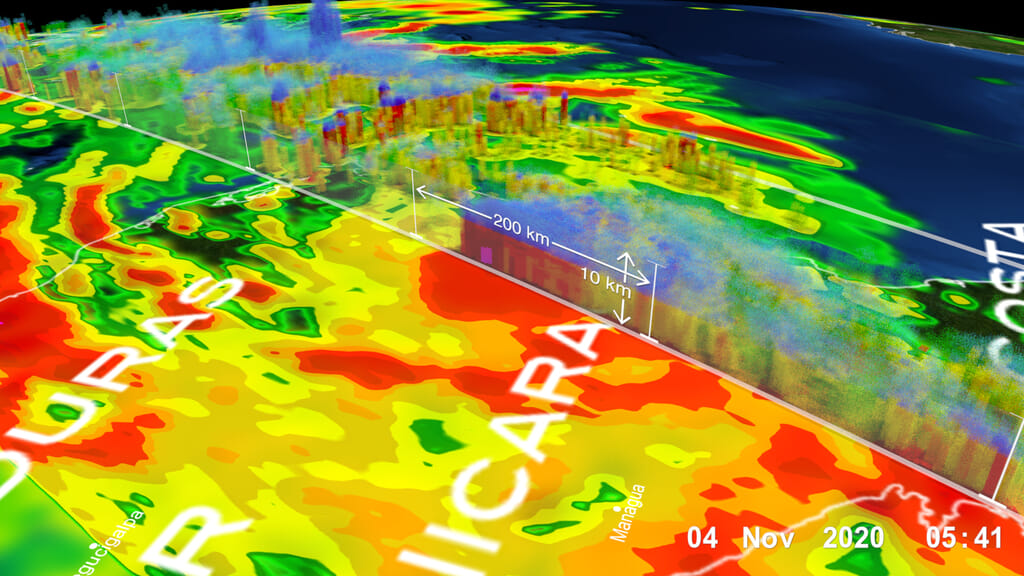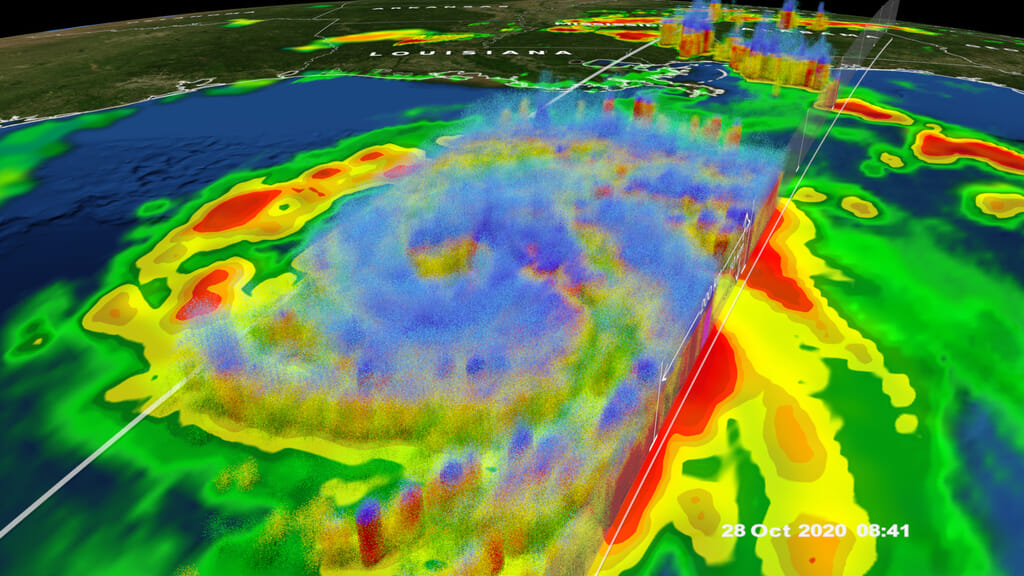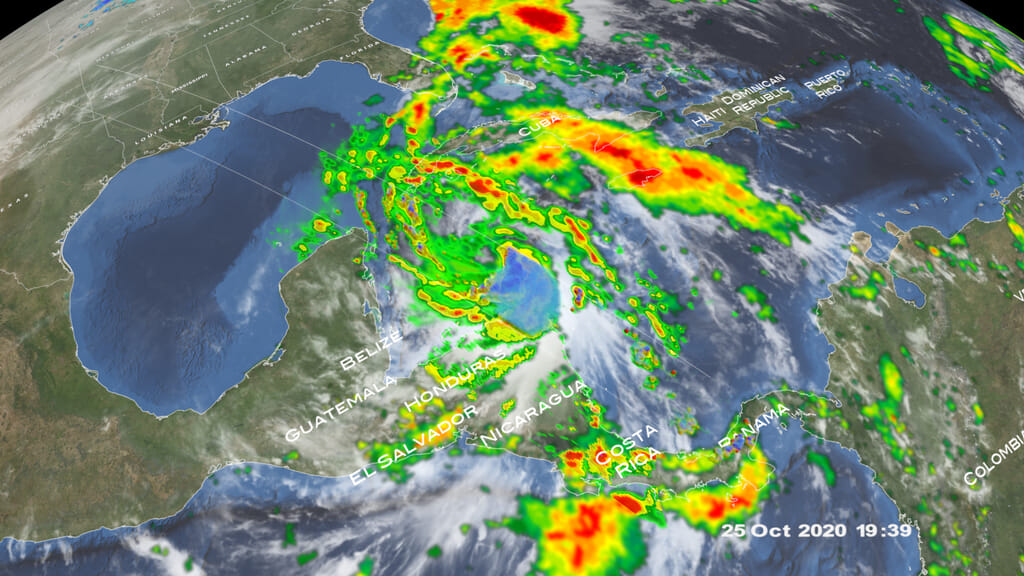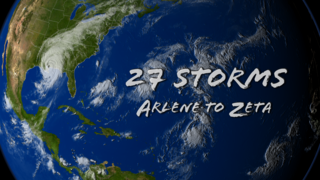27 Storms: Arlene To Zeta
By the numbers the 2005 Atlantic tropical storm season was unlike any other: A total 27 tropical storms, including 15 hurricanes, made it a record-breaking year. The season also gave rise to Katrina, one of the most intense and costliest hurricanes that resulted in 1,200 deaths and more than $100 billion in damages. The unusually high frequency and strength of these tropical storms were linked to favorable development conditions observed in the ocean and atmosphere between the Caribbean Sea and west coast of Africa where they form. Easterly winds blowing off the African continent seeded the Atlantic with a large number of proto-hurricanes—swirling air masses that grow over tropical waters. Ideal open ocean wind patterns on the surface and high above permitted storm clouds to easily mature into vigorous convective cells—the building blocks of hurricanes. Warmer ocean surface waters slightly above their 80 degrees Fahrenheit average further strengthened the storms and sent the spinning hurricanes into overdrive. The visualization below tracks the paths of all 27 tropical storms that made up this historical year.

Find out what fueled one of the worst hurricane seasons in history.
This season of storms went well past the typical Nov. 30 "end" of hurricane season.

Hurricanes form in the southern Atlantic through a combination of easterly winds off Africa, warm ocean water and other factors.

As hurricanes pass over warm water, they leave trails of cool water in their wake.

Hurricane Wilma intensified from tropical storm to Category 5 in just over a day. It remains the strongest Atlantic cyclone ever recorded.

NASA's TRMM spacecraft observed the internal structure of Hurricane Katrina on Aug. 28, 2005.
Credits
Please give credit for this item to:
NASA's Goddard Space Flight Center Scientific Visualization Studio
-
Animators
- Jeff de La Beaujardiere (NASA)
- Greg Shirah (NASA/GSFC)
- Alex Kekesi (Global Science and Technology, Inc.)
- Lori Perkins (NASA/GSFC)
- Horace Mitchell (NASA/GSFC)
- Stuart A. Snodgrass (HTSI)
- Marte Newcombe (Global Science and Technology, Inc.)
- Randall Jones (Global Science and Technology, Inc.)
- Eric Sokolowsky (Global Science and Technology, Inc.)
- Cindy Starr (Global Science and Technology, Inc.)
- James W. Williams (Global Science and Technology, Inc.)
- Jesse Allen (Sigma Space Corporation)
- Tom Bridgman (Global Science and Technology, Inc.)
-
Narrator
- Michael Starobin (HTSI)
-
Scientist
- Jeff Halverson (JCET UMBC)
-
Project support
- Kevin Mahoney (CSC)
- Joycelyn Thomson Jones (NASA/GSFC)
-
Writer
- Alison Schuyler Ogden (NASA/GSFC)
Release date
This page was originally published on Thursday, October 6, 2011.
This page was last updated on Wednesday, May 3, 2023 at 1:53 PM EDT.
